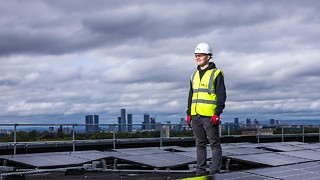Ice age tunnels discovered beneath the North Sea
Scientists from the University of Cambridge and the British Antarctic Survey found channels that had been formed nearly 21,000 years ago

Scientists have discovered tunnels beneath the North Sea that date back to the Ice Age.
The group, led by James Kirkham, geophysicist at the British Antarctic Survey (BAS) and the University of Cambridge, found channels that had been formed during the last ice age, around 21,000 years ago.
Known as ‘tunnel valleys’, the channels were cut by rivers that ran under the ancient ice sheets. The rivers were fed by meltwater as temperatures rose and the ice melted. The discovered tunnel valleys are carved into the rock beneath the North Sea’s seabed.
Their research and findings were published in the journal Geology.
Scientists used 3D seismic reflection technology to uncover and map this system of channels. The technology works similarly to an MRI scan, used in hospitals: waves are sent through the water and bounce off the rocks at the bottom, generating a 3D image of what lies beneath the Earth’s surface, just like an MRI scan generates images of organs in the human body.
The result is a series of images showing a system of channels buried beneath the North Sea, which, thanks to their unprecedented level of detail also sheds light on the history of the Ice Age as a whole.
“These delicate features tell us about how water moved through the channels beneath the ice and even how ice simply stagnated and melted away,'' said Dr Kelly Hogan, co-author of the study and geophysicist at BAS.
The findings will allow scientists to model how modern ice sheets, like Greenland or Antarctica, might behave in the future as they deteriorate due to rising temperatures.
As Hogan said, “Using these ancient channels to understand how ice will respond to changing conditions in a warming climate is extremely relevant and timely.”
 News / Uni offers students £55k in payouts31 October 2025
News / Uni offers students £55k in payouts31 October 2025 News / Students launch women’s society excluding trans women31 October 2025
News / Students launch women’s society excluding trans women31 October 2025 News / New Christ’s library approved4 November 2025
News / New Christ’s library approved4 November 2025 News / Uni error forces deeper spending cuts31 October 2025
News / Uni error forces deeper spending cuts31 October 2025 News / College rowing captains narrowly vote to exclude trans women31 October 2025
News / College rowing captains narrowly vote to exclude trans women31 October 2025










